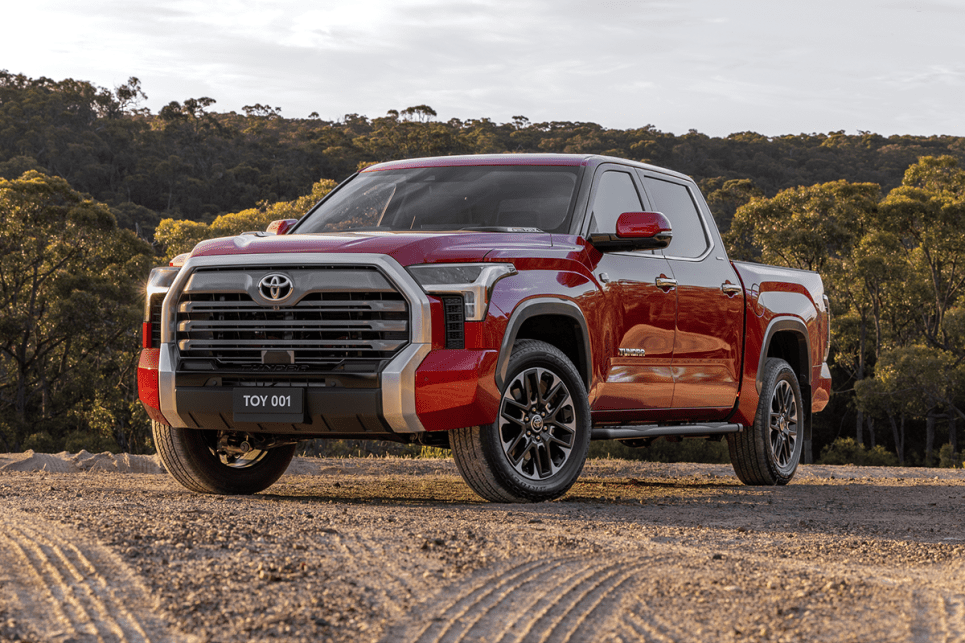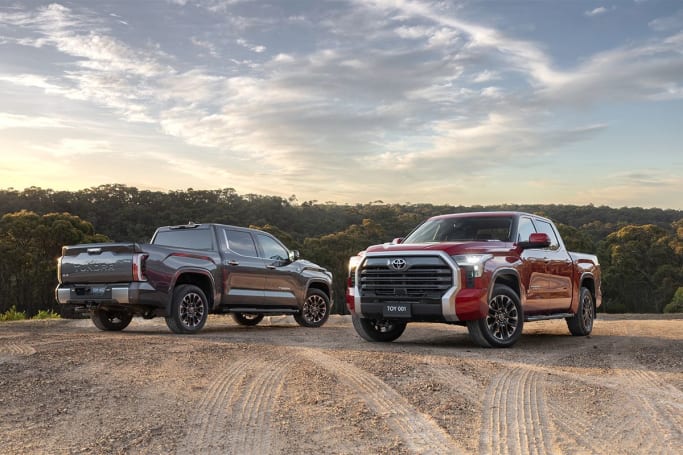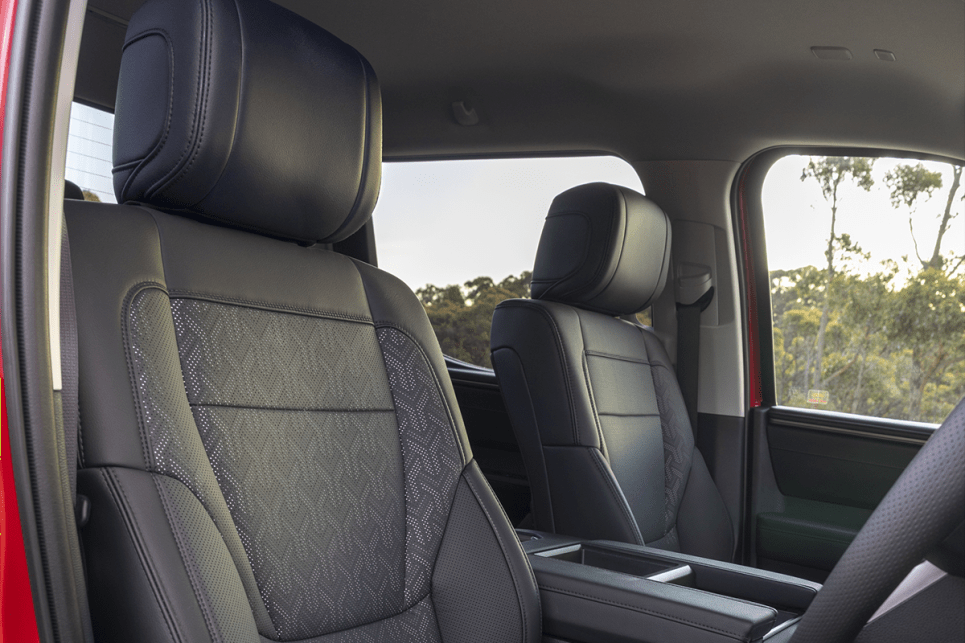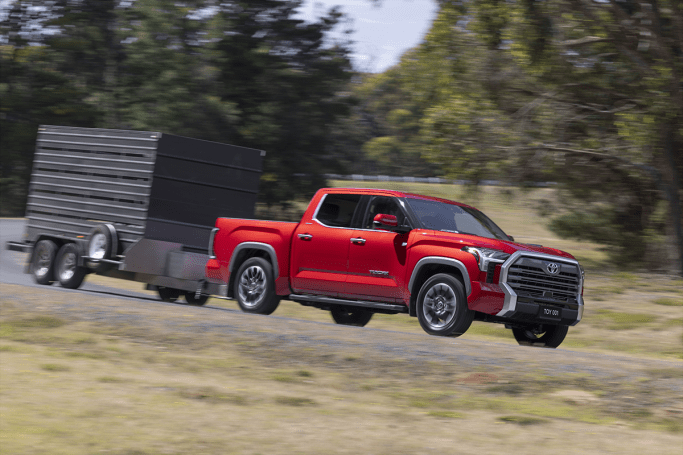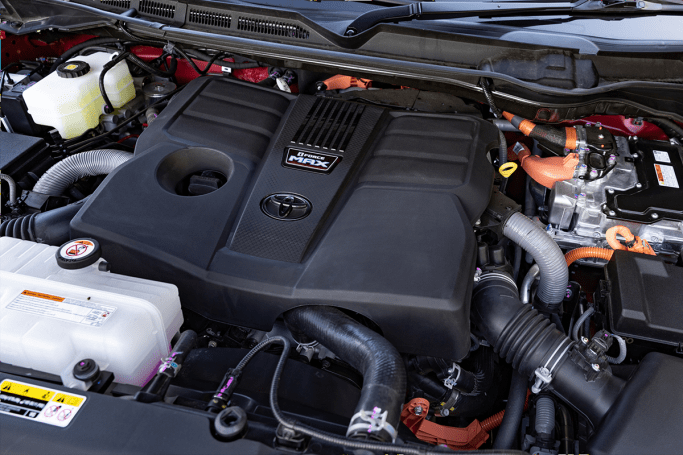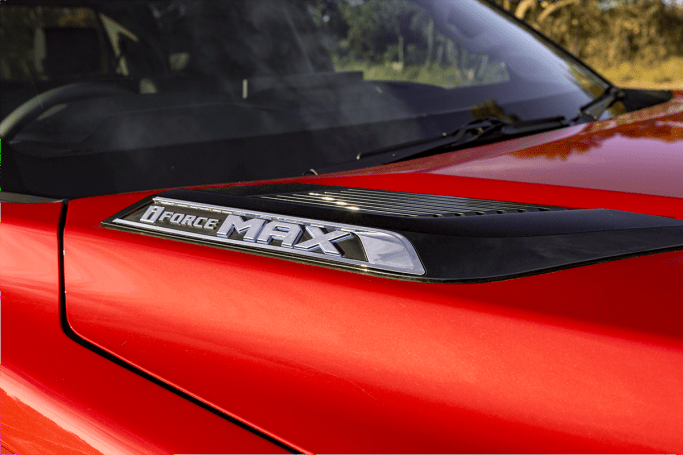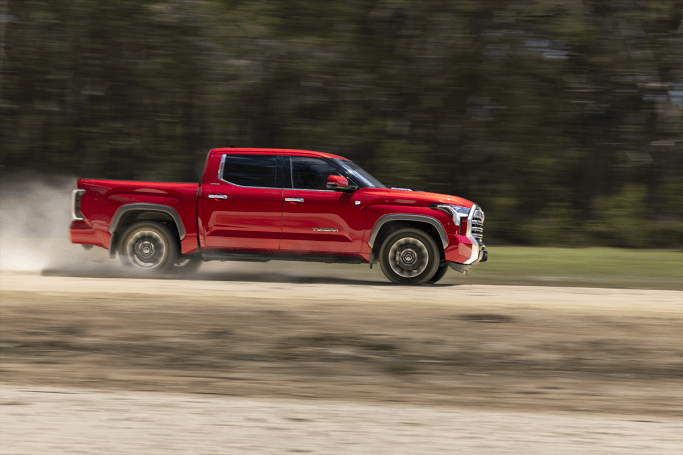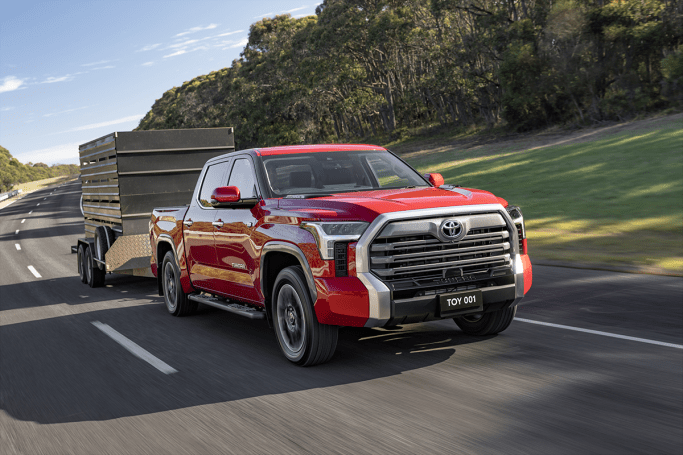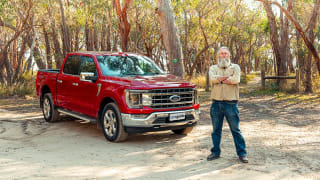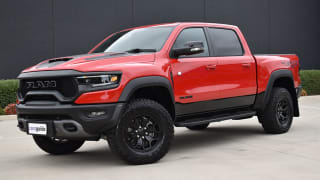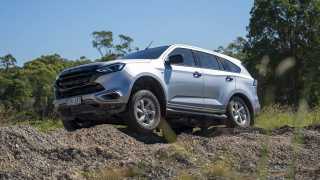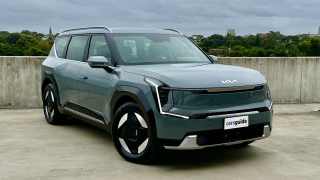An arbitrary pricing score here, I'm afraid. Toyota is yet to reveal the pricing for its Tundra, but you can bet it won't be cheap. I suspect we're talking six-figures and up.
The full spec list (or what we know so far, at least) for the single trim Tundra Limited is a 3.4-litre turbocharged V6 engine, 10-speed automatic transmission, a dual-range 4WD system with limited-slip differential, front double wishbone and rear multi-link suspension as well as ventilated (354mm) front and (335mm) rear disc brakes, plus a 122-litre fuel tank.
There's also electric power steering, auto LED lights (including daytime running lights), 20-inch sports alloy wheels (with 265/60R20 tyres), heated, power folding exterior mirrors (with reverse tilt-down), an active front spoiler, a tub management system with side and back rails and moveable tie-down points, a towbar, towball and tongue, as well as a 12-pin trailer wiring harness, a trailer brake controller and trailer reversing guide.
There are nine colour options with solid, crystal pearl, and metallic paint finishes, black synthetic leather seats, heated and ventilated front seats with eight-way power adjustment, a leather-accented steering wheel with controls for multimedia and driver assist systems, a 12.3-inch digital instrument cluster, 60/40-split rear seat back, front and rear carpet floor mats, two rear ISOFIX points and dual-zone climate control (with rear vents).
Then there's keyless entry and start, a 14.0-inch multimedia touchscreen and a 12-speaker JBL audio system.



